#3rd Duke of Portland
Explore tagged Tumblr posts
Link
William Henry Cavendish Cavendish-Bentinck, 3rd Duke of Portland was a British Whig and then a Tory politician during the late Georgian era. He served as chance...
Link: William Cavendish-Bentinck, 3rd Duke of Portland
#William Cavendish-Bentinck#3rd Duke of Portland#birthday#born today#famous birthday#famous birthdays#1738#April14
0 notes
Text










Stewart Boardwalk, BC (No. 1)
The Nisga'a, who live around the Nass River, called the head of Portland Canal Skam-A-Kounst, meaning "safe house" or "strong house", probably because it served them as a retreat from the harassment of the Haida and Tlingit from the outer coast. They travelled in the area seasonally to pick berries and hunt birds. It and the rest of the Portland Canal had previously been the domain of the Tsetsaut people, also called the Skam-a-Kounst Indians, or Jits'aawit in Nisga'a, an Athapaskan people who became decimated by war and disease and were driven out of the Stewart area by either Haida or Nisga'a in 1856–57.
The Portland Canal was first explored and named in July 1793 by Captain George Vancouver in honour of William Cavendish-Bentinck, 3rd Duke of Portland (1738–1808), Home Secretary from 1794 to 1801. Vancouver met two friendly native people at the current site of Stewart. The area around the Portland Canal was again explored in 1896 by Captain D.D. Gaillard of the United States Army Corps of Engineers (after whom the Gaillard Cut in the Panama Canal was later named). Two years after Gaillard's visit, the first prospectors and settlers arrived. Among them was D. J. Raine, for whom a creek and a mountain in the area are named. The Stewart brothers arrived in 1902. In 1905, Robert M. Stewart, the first postmaster, named the town Stewart.
Source: Wikipedia
#Estuary Boardwalk#travel#original photography#vacation#tourist attraction#landmark#clouds#nature#Canada#summer 2023#fir#the North#cityscape#landscape#forest#woods#flora#food#Stewart#Kitimat–Stikine#British Columbia#small town#countryside#tide flats#Stewart Boardwalk#Portland Canal#Portland Inlet#Pacific Ocean#mountains
4 notes
·
View notes
Text
Discovered in the sarcophagus of Emperor Alexander Severus near Rome in 1582, the vase passed through the Barberini family, British ambassador Sir William Hamilton, and finally to the 2nd & 3rd Dukes of Portland who gave it to the British Museum. Author Thomas Windus (1778-1854), an English coachbuilder and collector of engraved gems, explores the iconography on the vase depicting Augustus, his family, and his rivals, as well as marine creatures such as sea snakes, and a marriage scene. This is an early and important study of this rare masterpiece of Roman glass.
Source: A New Elucidation of the Subjects on the Celebrated Portland Vase (si.edu)
The scenes on the vase are divided into two parts by a bearded head (perhaps with horns), one under each handle. The first scene has four figures which include a young man leaving a shrine in the countryside and wearing a cloak. The man holds the arm of a semi-naked woman sitting on the ground preoccupied with stroking an animal resembling a snake. Above the woman is the flying figure of Eros with his customary bow and a torch in his right hand. On the right is a bearded male standing between two trees and depicted in a contemplative mood with his chin resting on his hand.
The second scene on the other side of the vase shows three figures all sitting on rocks with a background of a single tree. On the left is a young male next to a column or pillar, whilst in the centre is a young woman with her arm raised to her head and holding a torch which hangs down to the ground. On the far right is another half-dressed woman who holds a sceptre or staff in her left hand.
The exact significance of the scenes is not known for certain, but a commonly held speculation is that it is the wedding of Thetis and Peleus from Greek mythology that is being shown. Other interpretations include the dreams of Olympias, Alexander the Great's mother. This would make the reclining female figures in both scenes Olympias, the snake Alexander's father Zeus, and the young male leaving the temple as Alexander. Another interpretation is the similar story of Julia Mammaea and Roman emperor Alexander Severus. Finally, some have suggested the scene with Eros shows Mark Antony and Cleopatra, whilst the reverse scene has Augustus consoling Octavia with the goddess Venus looking on.
Source: The Portland Vase - World History Encyclopedia
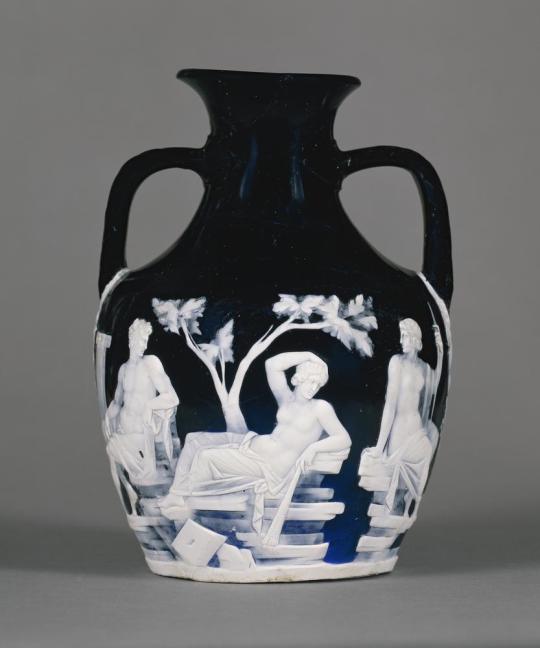
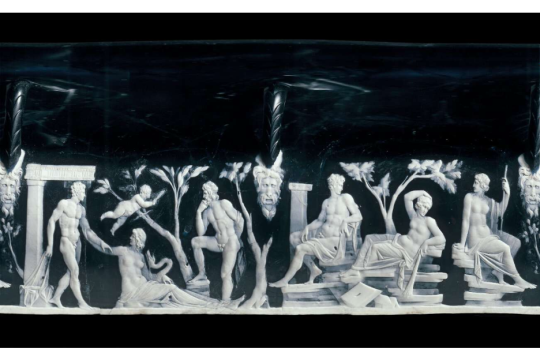
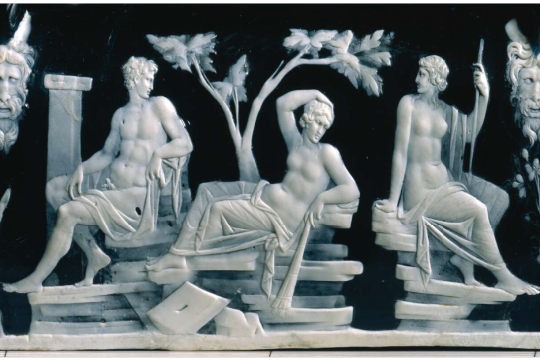
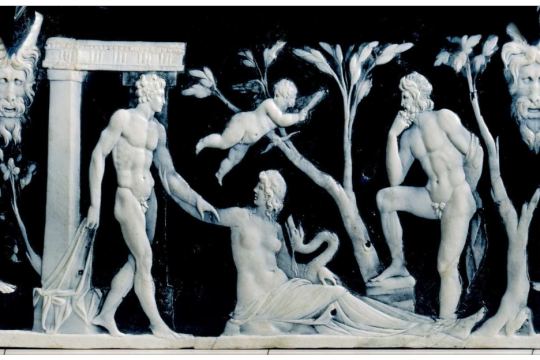
Glass cameo vase, Roman, 1st century AD
from The British Museum
#vases#roman vases#ancient rome#roman art#rome 100 ce#100 ce#the british museum#alexander severus#emperor alexander severus#roman empire#i so wish we knew more about the iconography#the portland vase#Rome ce
3K notes
·
View notes
Text

Prince William 👑 will be the first ‘Boleyn King’ from both sides of his family mother and father to become King of UK 🇬🇧👑👑👑
As he is a descended from Mary Boleyn through his father and via mother’s Spencer line, below you can see the genealogy line.
From the fathers line Charles III :
Mary Boleyn (d. 1543) m. William Carey
Catherine Carey (c.1524-1569) m. Sir Francis Knollys
Lettice Knollys (1543-1634) m. Walter Devereux, 1st Earl of Essex
Robert Devereux, 2nd Earl of Essex (1565-1601) m. Frances Walsingham
Frances Devereux (1599-1674) m. William Seymour, Duke of Somerset
Jane Seymour (1637-1679) m. Charles Boyle, 3rd Viscount Dungarvan
Charles Boyle, 2nd Earl of Burlington (d. 1704) m. Juliana Noel
Richard Boyle, 3rd Earl of Burlington (1695-1753) m. Dorothy Savile
Charlotte Elizabeth Boyle (1731-1754) m. William Cavendish, 4th Duke of Devonshire
Dorothy Cavendish (1750-1794) m. William Cavendish-Bentinck, 3rd Duke of Portland, Prime Minister
Lieutenant-Colonel Lord Charles Bentinck (1780-1826) m. Anne Wellesley (Lady Abdy)
Reverend Charles Cavendish-Bentinck (1817-1865) m. Carolina Louis Burnaby
Cecilia Nina Cavendish-Bentinck (1862-1938) m. Claude Bowes-Lyon, 14th Earl of Strathmore and Kinghorne
Elizabeth Bowes-Lyon, Queen Elizabeth the Queen Mother (1900-2002) m. King George VI
Queen Elizabeth II (1926- ) m. Prince Philip of Greece and Denmark, now known as Prince Philip, Duke of Edinburgh
Charles, Prince of Wales (1948- ) m. Lady Diana Spencer (1961-1997)
Prince William, Duke of Cambridge (1982- ) and Prince Harry, Duke of Sussex (1984- )
From mother Princess Diana Spencer Line :
Mary Boleyn (d. 1543) m. William Carey
Henry Carey, 1st Baron Hunsdon (1526-1596) m. Anne Morgan
Robert Carey, 1st Earl of Monmouth (c. 1560-1639) m. Elizabeth Trevannion
Thomas Carey of Sunninghill Park (d. 1634) m. Margaret Smith
Elizabeth Carey, Viscountess Mordaunt (1632-1679) m. John Mordaunt, 1st Viscount Mordaunt
Brigadier-General Lewis Mordaunt (d. 1713) m. Mary Collyer
Anna Maria Mordaunt (d. 1771) m. Stephen Poyntz
Margaret Georgiana Poyntz, Countess Spencer (1737-1814) m. John Spencer, 1st Earl Spencer
George Spencer, 2nd Earl Spencer (1758-1834) m. Lady Lavinia Bingham
Frederick Spencer, 4th Earl Spencer (1798-1857) m. Adelaide Horatia Seymour
Charles Spencer, 6th Earl Spencer (1857-1922) m. Hon. Margaret Baring
Albert Spencer, 7th Earl Spencer (1892-1975) m. Lady Cynthia Hamilton
John Spencer, 8th Earl Spencer (1924-1992) m. Frances Roche
Diana, Princess of Wales ((1961-1997) m. Charles, Prince of Wales
Prince William, Duke of Cambridge (1982- ) and Prince Harry, Duke of Sussex (1984- )
Facebook
1 note
·
View note
Text

The Prince of Wales to the Duke of Portland
[Shortly before 21 Jan. 1793]
The regard wh. I have long felt towards you, as well as ye. candid & unequivocal light in wh. I always wish my conduct shd. stand, inclines me to open my mind to you upon the present posture of affairs. I have never conceal’d from you the apprehensions I entertain’d previous to the commencement of the present Session of Parliament at the unwarrantable and seditious proceedings tending to endanger the public wellfare & wh. induced me, at the close of the last Sessions, to give the most active & public testimony in my power to support to his Majesty’s Proclamation, & wh. I then flatter’d myself wd. have been amply sufficient to have remedied the evil as it then existed. I am sure you equally lament with me the little success with wh. this judicious measure has been attended, & equally regret by misrepresentation the pernicious example wh. the dangerous excesses of France was likely to instill into the minds of the ignorant & unwary when used by the disaffected in this country as a handle to propagate by all the art & industry yt. evil machinations cd. suggest doctrines & principles in my opinion not only hostile to, but totally subversive to the existance of our happy Constitution. I am sure I need not also recall to yr. mind ye. general state of gloom approaching to dispondency wh. so universally prevail’d antecedent to the present assembling of Parliament among the most thinking & temperate of all parties & professions; nor can I help ascribing due merit to those moderate & well-tim’d measures wh. have, thank God, restored confidence to the most timid, vigor & unanimity to all classes of men thro’-out the nation. In these sentiments, my dear Duke, I am happy in beleiving we heartily concurr, tho’ I see with the deepest regret such WIDE differences of opinion upon such RADICAL principles prevailing amongst men of whom I have ever entertain’d the highest opinion & for whom individually I shall wish always to feel the truest regard, that I cannot look forward to a rejunction as a possible event, nor can I think that in pressing some late measures to the extent that has been attempted under the present chrysis of affairs, have they even made it a desirable one. While anything amicable was either likely or possible to be adjust’d I refer to yr. recollection whether I have omitted any exertion yt. was likely to accomplish it, & I cannot help acknowledging the pain I felt when I perceived the real cause & consequently the extent of the disunion. Under these circumstances I can feel but one principle in my mind, namely, the public good, & wh. I consider will be best effected by being guided by those feelings of duty & affection to my father wh. will lead me to give every assistance in my power in support of such measures as HE approves, for the wellfare & security of HIS Government & the happiness of his people.
I will not enter more at length upon so unpleasant a subject but wh. I felt myself impell’d to touch upon thus far by yt. frankness & sincerity wh. I trust as it ever has so it will continue to be the principle & guide of my conduct. I therefore conclude with a repetition of those sentiments of the truest regard with wh. I ever shall remain, my dear Duke, yr. very sincere friend.
3 notes
·
View notes
Photo

Dorothy Bentinck, née Cavendish, Duchess of Portland (27 August 1750 - 3 June 1794)
#dorothy bentinck#dorothy cavendish#duchess of portland#daughter of william cavendish 4th duke of devonshire#wife of william cavendish-bentinck 3rd duke of portland#history#women in history#18th century#art
5 notes
·
View notes
Text
Elizabeth Angela Marguerite Bowes-Lyon
On this date 121 years ago, Lady Elizabeth Angela Marguerite Bowes-Lyon was born. To celebrate this, in no particular order, we start with our first post celebrating the life of the woman who never imagined she would one day be Queen.

Elizabeth Angela Marguerite Bowes-Lyon (4 August 1900 – 30 March 2002) was Queen of the United Kingdom and the Dominions from 1936 to 1952 as the wife of King George VI.
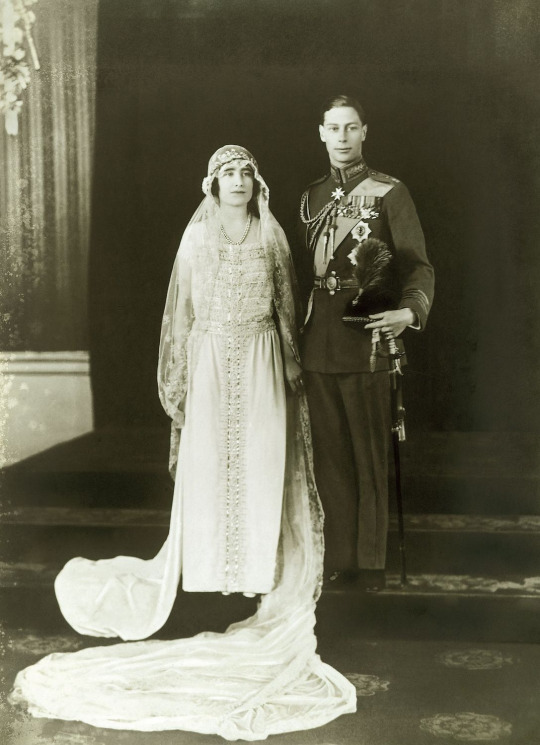
She was the last Empress of India from 1936 until India gained independence from Britain in 1947. After her husband died, she was known as Queen Elizabeth The Queen Mother.

Elizabeth was the youngest daughter and ninth of ten children.

Her parents were Claude Bowes-Lyon, Lord Glamis and Cecilia Cavendish-Bentinck.
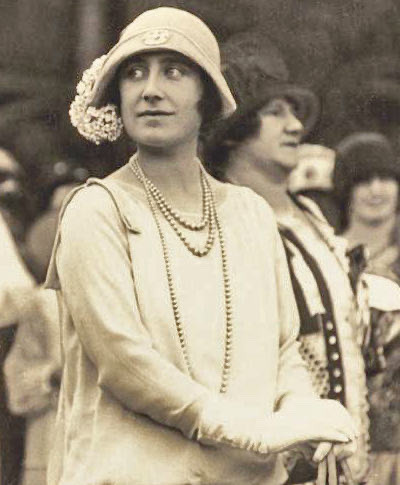
Her father later became the 14th Earl of Strathmore and Kinghorne in the Scottish Peerage.

Her mother was a descendant of both Prime Minister William Cavendish-Bentinck, 3rd Duke of Portland and Governor-General of India, Richard Wellesley, 1st Marquess Wellesley.
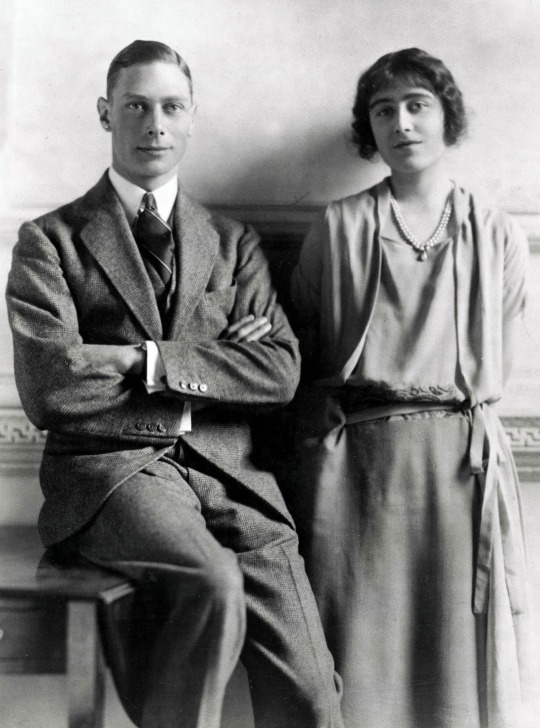
There is some confusion as to where Elizabeth was born. She was either born in a horse-drawn ambulance on the way to hospital, her parents’ house at Belgrave Mansions, Westminster or, Forbes House in Ham, London, the home of her maternal grandmother Louisa Scott.
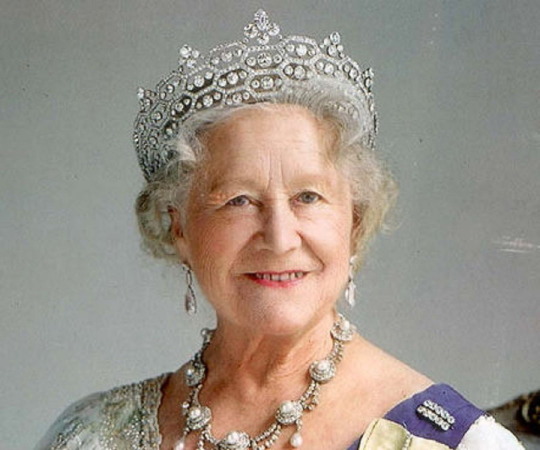
Her birth was registered at Hitchin, Hertfordshire, close to the Strathmore’s country home, St Paul’s Walden Bury.
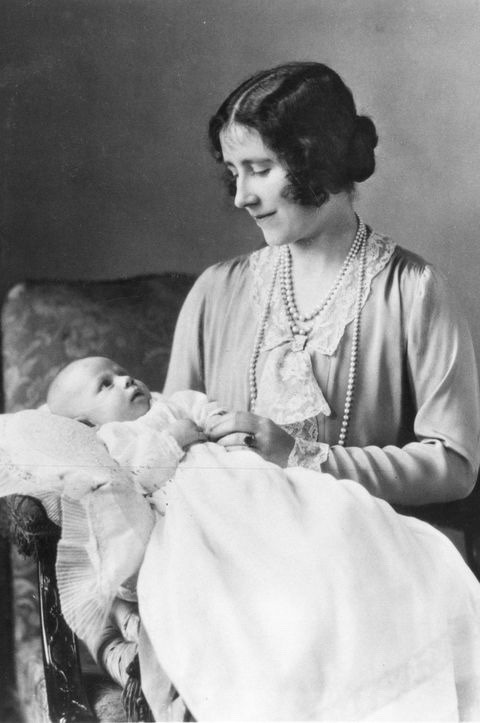
Elizabeth was christened at the local parish church All Saints on the 23rd September 1900. Her godparents included her cousin Venetia James and her Aunt, Lady Maude Bowes-Lyon.

As a child, Elizabeth spent most of her time at St Paul’s Walden and her ancestral home Glamis Castle, Scotland.
75 notes
·
View notes
Photo

William Henry Cavendish-Bentinck, 3rd Duke of Portland, 1792, Thomas Lawrence
20 notes
·
View notes
Text

The Most Noble Dorothy Bentinck, Duchess of Portland, wife of William Cavendish-Bentinck, 3rd Duke of Portland; nee Lady Dorothy Cavendish, daughter of William Cavendish, 4th Duke of Devonshire, and Lady Charlotte Boyle, suo jure 6th Baroness Clifford.
12 notes
·
View notes
Text
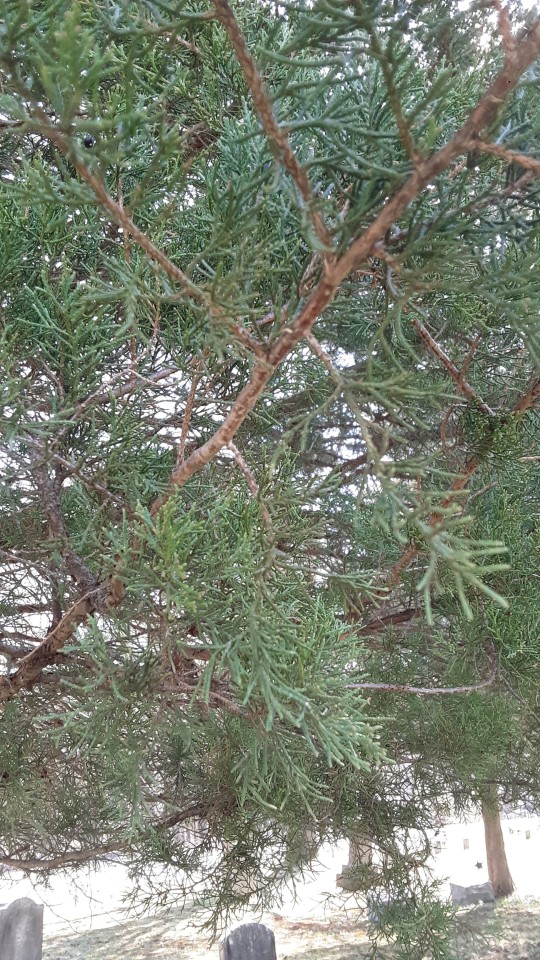

🌲Eastern Red Cedar
Juniperus virginiana L.
Aka. I don't know what the native names of cedar are.
A slow growing evergreen that cat be up to 66ft tall. Red cedar is often one of the first species to repopulate an area that has been cleared. There are two subspecies of red cedar,
J. virginiana var. virginiana (shown)
J. virginiana var. silicicola or sand juniper (found on the south east coast)
Red cedar can be host to cedar-apple rust that also attacks apple trees. They can also be invasive in some areas, specifically grassland. They were introduced to the prairie during the Dust Bowl. Thier population was once controlled naturally by wildfires.
The tree is a food source for cedar waxwings, turkeys, and bluebirds
Red cedar fruit was used as a diuretic and a tea. The tea was used to treat worms, colds, cough, rheumatism, to induce sweating, dropsy, and as a stimulant. Berries where chewed to treat canker sores. Leaves (needles? scales?) where burned as treatment for colds, rheumatism, bronchitis, and purification. Wood shavings were boiled in an iron pot to get oil to use as a bug repellent.
The wood is used for fence posts, chests, lining for closets and chests.
Some native Americans used cedar as territory markers. The name of Baton Rouge comes from these markers. The Cahokia woodhenge was made of these trees. The smoke was used to drive away negative spirits.
All parts of red cedar may be toxic and pollen is a major source of allergies.
Sources.
Wikipedia Juniperus virginiana
Peterson Field Guide to Medicinal Plants and Herbs of Eastern and Central North America 3rd addition. By Steven Foster and James A. Duke pg. 342
Photo taken by SallyA in Evergreen Cemetary in Portland ny
6 notes
·
View notes
Photo
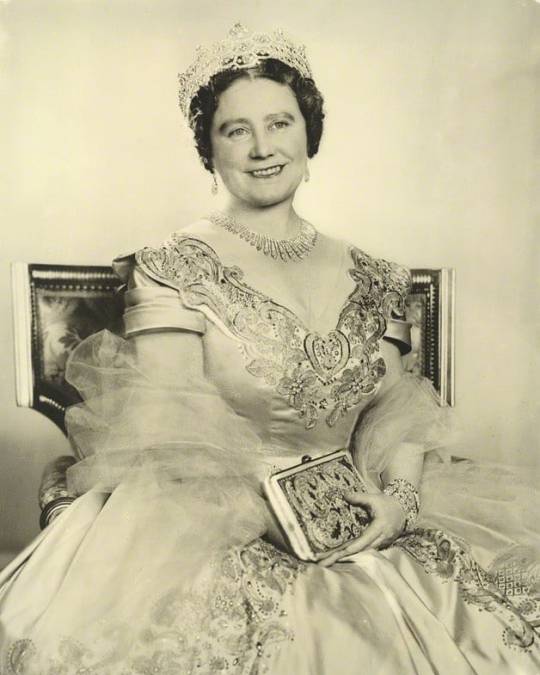
Queen consorts . Queen Elizabeth . Elizabeth Angela Marguerite Bowes-Lyon (4 August 1900 – 30 March 2002) was Queen of the United Kingdom & the Dominions from 1936 to 1952 as the wife of King George VI. She was the last Empress of India from 1936 until India gained independence from Britain in 1947. After her husband died, she was known as Queen Elizabeth The Queen Mother, to avoid confusion with her daughter, Queen Elizabeth II. . DID YOU KNOW? Four of her brothers served in the ARMY during the First World War. Her elder brother, Fergus, an officer in the Black Watch Regiment, was killed in action at the Battle of Loos in 1915. . Born into a family of British nobility, Elizabeth came to prominence in 1923 when she married the Duke of York, the second son of King George V & Queen Mary. The couple & their daughters Elizabeth & Margaret embodied traditional ideas of family & public service. The Duchess undertook a variety of public engagements & became known for her consistently cheerful countenance. . DID YOU KNOW? Her mother was descended from British Prime Minister William Cavendish-Bentinck, 3rd Duke of Portland. . In 1936, Elizabeth’s husband unexpectedly became king when his older brother, Edward VIII, abdicated in order to marry the American divorcée Wallis Simpson. Elizabeth then became queen. She accompanied her husband on diplomatic tours to France & North America before the start of the Second World War. During the war, her seemingly indomitable spirit provided moral support to the British public. After the war, her husband’s health deteriorated, & she was widowed at the age of 51. Her elder daughter, aged 25, became the new queen. . DID YOU KNOW? Elizabeth publicly refused to leave London during the Second World War or send the children to Canada, even during the Blitz, when she was advised by the Cabinet to do so. She declared, “The children won’t go without me. I won’t leave the King. And the King will never leave.” . Continues in the comments… . (at United Kingdom) https://www.instagram.com/p/CRMeYeas4fM/?utm_medium=tumblr
2 notes
·
View notes
Text
1824 Aug., Sat. 28
6 3/4
3 20/60
From 8 10/60 to 9 10/60 took a stroll along Coventry Street, Halfhide and Co., No. 7. Will cut me a seal with a motto e.g. a violet under a hedge with the motto il faut me chercher, for a guinea. Cutting my arms would be 3 guineas –
Then strolled along the Haymarket Jermyn Street., Regent Street to the end of Pall-Mall, thro’ St. James Square home – Sauntering leisurely turning up and down to look about me – Breakfast at 9 1/2 – went out at 10 10/60 –
Mr. Webb went with me to shew me the Jews’ synagogue (Danemark Court, Exeter Street Strand) – Went thro’ Leicester Square – 1/4 hour at the synagogue – Much disappointed – A dirty shabby place, yet they say, quite as good as that in Duke’s place near Houndsditch – But it seems, their grand place, where the tabernacle is, is in the minories – the Jew do not like to admit strangers – Cordingley met us just come out of the chapel (I had sent her at 9 to Mr. Truefitt to take a lesson in hair dressing) –
Went to the sitting magistrate Hatton garden – Only 2 magistrates there this morning (got there at about 11), the one Mr. Flower, the other (the most gentlemanly) who behaved to me so like a gentleman yesterday – 5 40/60 p.m. Interrupted here by dinner –
Mr. Webb soon brought up a roast leg of mutton and a newspaper asking me if I would like to look at it – I casually answered yes! He said there was business at Hatton Garden in it – He had never thought of its getting into the papers, and now it would be in them all – ‘Ah!’ said I, ‘the thought and fear of it just struck me last night – I am very sorry for it’ – It was the Times newspaper of today –
The whole thing very fairly put in – At the moment I felt mortified and annoyed at the idea of what a quiz it would be against me – Mr. Webbe saw this, which was probably more than he expected – I soon, however, grew reconciled as I always do, and told Mr. Webb when he came in again I could not help laughing at the thing, and did not know before that I was like a foreigner – “a lady whose habiliments and address bespoke her of foreign extraction” –
Told Mr. Webbe, if my uncle saw, it would a laugh against me forever – The truth was, I thought first of the Saltmarshes and that it would be in everybody's mouth at Halifax –
But to return to my this morning’s visit in Hatton garden – I walked in to the magistrates room – It seems, by the newspaper, Mr. Rogers was the 3rd magistrate yesterday and Mr. Laing the gentlemanly man to whom I felt most obliged –
I bowed and told him I had brought Mr. Webb – Mr. Laing appeared to smile, just said if I would give my name and address the permission should be granted – I asked if my name would not be sufficient. On his answering, ‘No!’ They were obliged to be particular whom they admitted – only to admit ladies and gents – Immediately wrote Miss Lister Shibden Hall Yorkshire, and Mr. Laing desired a clerk to write an order for me and my servant Elizabeth Wilkes Cordingley and Mr. Webb to see the tread-mill and the interior – I bowed, said I was much obliged the the gents, and retired –
The order procured us instant admittance, the utmost civility, and a sight of the whole interior – I asked the matron (a very nice woman who shewed the womens’ apartments, if she often shewed them – She said yes! But it required a particular order from the magistrates – And that this order (by which we were admitted), must have been a very particular one –
A most gratifying sight to see the prison so clean, and healthy, and orderly, and altogether in such excellent discipline – About 250 men and women and children – The men and women have 1 1/4 lb. bread a day, a pot (would hold a quart, I think at least) of gruel a day, and 6 oz. of meat every other day, and on the intermediate days, soup made of what the meat (beef, I understood) was boiled thickened with oatmeal and vegetables –
The women far worse to manage then the men – The matron would have less trouble with 500 men than 10 women – The young women (in their teens) the worst – And the man told us, the boys were much worse than the men – He thought there was more vice among them then any set of people –
8 20/60. I have just had Mr. Webb who came with the Courier newspaper (a little different from the Times, not less civil to me) and begged to say, he thought perhaps I had best write something in reply – Had best write a handsome letter to the editor of which paper I chose (I preferred the Courier) – I shall think of this a few minutes –
Began to write some – Buckley came with my pelisse – It does not fit at all – A great deal too large – Then the person from Waller’s brought my stays – Luckily, these do very well – At last, at 10 1/2 sat down and finished (altered the whole style of what I had written before) the following:
“To the editor of the Courier –
Sir – I have this moment read in your paper of today, the account of my applying yesterday to the magistrates of Hatton Garden for permission to see the treadmill at Cold Bath-Fields prison – I am surprised and sorry to find myself so unexpectedly intruded on the valuable space of your paper, having been perfectly thoughtless that so unimportant a circumstance could have been deemed worthy of notice; but since the matter has been made public, I feel desired that my motive should be divested of the “scientific” nature to which it has been attributed, and reduced to the simple wish of examining for myself the merits or demerits of the tread-mill.
I beg to express my thanks to the magistrates for their order of admission, which procured me not only access to the whole interior of the building, but the most obliging civility and attention from the matron and other attendants, on whom the apparent health and civil manners of the prisoners, and the perfect neatness and cleanliness of all the rooms, reflect the highest credit –
I cannot help feeling persuaded from the case with which all the prisoners, male and female, seemed to perform the exercise of the tread-mill, as well as from the short trial I myself made of it, that the labor is not so excessive as it has been represented, nor by any means so great as that daily undergone by a large portion of the lower classes of society –
If this determination never to condemn even in my own mind (for I presume not beyond this) any institution sanctioned by the proper authorities of my country, till I have taken all the pains in my power to procure the best possible information on the subject, –
If such a determination, tho’ however in the present case too hastily or ignorantly pursued, can at all excuse the singularity and perhaps informality of my application to the magistrates, I shall be much obliged to you to insert this letter in your next paper, and am Sir, your honourable servant A. Lister”–
Sent for Mr. Webbe – read him the above – He thought nothing could be better and was for my sending it – But I had determined to let the matter rest, and merely wrote this, that he might not think I could not do it –
Told him I should not like the notoriety of the thing – Should bring John Bull upon myself, etc. etc. and should be absent into the bargain, etc. and Mr. Webbe finished by agreeing I was right, tho’ I plainly saw he would have liked the notice into which I should probably bring myself –
I told [him] I could bring myself into notice any time, but it would not suit me now. John Bull would sift out everything. And my uncle, tho of an old family and good fortune, did not live in that style, would bear me out at present as I should wish –
But to return once more to the morning – After leaving the prison Mr. Webbe walked with us in search of South Crescent (Alfred Place Tottenham Court road) – It seemed a pretty long walk thro’ Brandenburgh, n! Mecklenburgh Squares, and thro’ an abundance of new streets –
Knocked at home 3 in the crescent – Asked for a wrong person, merely to find out that Mr. James Vallance lived there – A dirty woman servant came to the door – A simple house, like all the rest in the crescent – 4 stories high including the cellar kitchens – But I think the V– [Vallance]’s must be a vulgarish set –
Returned by the Soho bazar – Mr. Webbe shewed us all over it – Got home at 2 – Thanked Mr. W– [Webb] for his civility – The poor man had spoken most handsomely of his wife, and seemed to like to talk of her – He seems impressed with a considerable of my talents, and importance, physical strength, walking, riding, etc. etc.
Asked him about the expense of living in London – or of having lodgings or being at an hotel – He thought I could keep myself a maid and 2 men at an hotel very handsomely for 3 guineas a day, and a couple of horses would cost me a guinea a week each at livery –
My cloth boots pinched me – Changed them and went out again directly – Took Cordingley to shew her the Burlington Arcade and Western Exchange bazar – Then sent her home –
Sauntered slowly along myself to 166 Strand, and bought (at Dobson’s) a self-pointing pencil – Did npot much like the manners of the man, but found his pencil 3 /. [shillings] cheaper than in the Exeter change [Exeter Exchange], where I bought a small mariner’s compass in a brass case 4 /. [shillings] –
Then sauntered all along Regent Street and Portland Place, and Park Crescent across the new road a little way into the Park – The entrance paris style portico and steeple of all souls church at the far end of Regent Street very beautiful – The circle not quite finished – Regent Street and the tout ensemble Portland Place, etc. magnificent –
Met with a seal cutter No. 260 who would cut a fancy seal (a violet and il faut me chercher) for about 12 /. [shillings], ladies’ arms 1 1/2 guineas, gentlemans 2 guineas, without a motto, and 2 1/2 with one – Silvester No. 27 Strand would charge 18 /. [shillings] for the fancy seal, 2 guineas for a lady’s arms, and 2 1/2 for a gentlemans – Cheaper than Halfhide –
Got home at 5 20/60 – Washing my hands, etc. Dinner at 5 40/60 – The occupations of the evening are given out of their place – Above – Very fine day – E [one dot, treating venereal complaint] O [no dots, marking discharge].
Settl[ed my accounts (sent Cordingley to bed at 11) and went to my room at 12 40/60. Then packed, which took me till 2 3/4 –
[More About Coldbath Fields Prison]
In the Mount Pleasant area of Clerkenwell, London the prison was originally run by magistrates and housed prisoners on short sentences of up to two years, and also served as a debtor's prison. It took its name from Cold Bath Spring, a medicinal spring discovered in 1697. The prison housed men, women and children until 1850, when the women and children moved to Tothill Fields Bridewell, leaving only male offenders over the age of 17. Despite its aspirations to be more humanitarian, it became notorious for its strict regime of silence and its use of the treadmill.
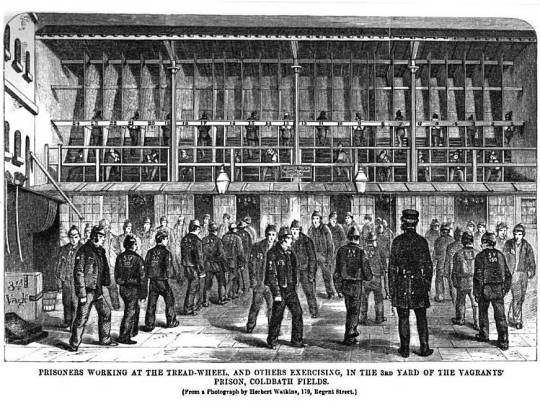
"Prisoners Working At The Tread-wheel, And Others Exercising, In The 3rd Yard Of The Vagrants' Prison, Coldbath Fields" from "The criminal prisons of London, and scenes of prison life (1864) by Henry Mayhew & John Binny.

Another image from “The criminal prisons of London, and scenes of prison life” (1864) by Henry Mayhew & John Binny. The main felons block is on the left, the vagrants block was the "half cartwheel" bottom left, the misdemeanants block centre right. More details are on the accompanying plan File:coldbath-fields-plan-mayhew-p283.jpg

Extract from London Courier and Evening Gazette, Saturday 28 August 1824, shared by Moira Macdonald with The Real Anne Lister blog.
6 notes
·
View notes
Text
Captain Lord Robert Manners
He was born on 6 February 1758, the second son of Lieutenant-General John Manners, the Marquis of Granby, and grandson of John, 3rd Duke of Rutland. His mother was Lady Frances Seymour. He was the first cousin of Captain Hon William Clement Finch and Hon. Seymour Finch. An illegitimate cousin was Captain Evelyn Sutton.
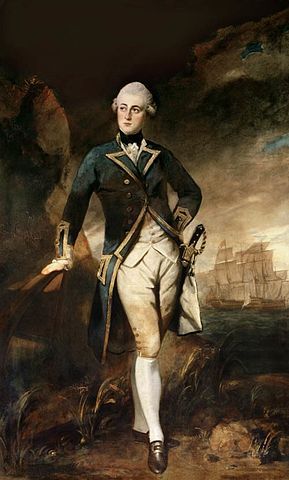
Captain Lord Robert Manners by Sir Joshua Reynolds (1723 - 1792)
Manners was educated at Eton from 1763-71 before joining the navy in April 1772 aboard the Panther 60, Captain Cornthwaite Ommanney, flying the broad pennant of Commodore Molyneux Shuldham and going out to Newfoundland in the following month where that officer served as the commander-in-chief. Returning home in November after a brief secondment to the Aldborough 24, Captain James Hawker, he then returned to Newfoundland with the Panther in the following two years, as was the custom.
In July 1775 he joined the frigate Enterprise 28, Captain Sir Thomas Rich, going out to the Mediterranean from Spithead during July, and remaining on that station for the next couple of years, during which period he was appointed an acting lieutenant. He left this vessel in the autumn of 1777 to return home to seek a lieutenant’s commission.
On 13 May 1778, as a beneficiary of the King’s fleet review, he was commissioned lieutenant of the Ocean 90, Captain John Laforey, in which ship he was present at the Battle of Ushant on 27 July. He transferred to Admiral Hon. Augustus Keppel’s flagship Victory 100 on 17 September, but in the following spring resigned his commission and went on half-pay in order to personally apply to the first lord of the Admiralty, Earl Sandwich, for a more active posting.Accordingly in July 1779 Manners joined the newly launched Alcide 74, Captain John Brisbane, but which ship, somewhat frustratingly, was not able to leave the Thames until November from where she went around to Spithead. She was subsequently present with Admiral Sir George Rodney’s fleet at the Moonlight Battle off Cape St. Vincent on 16 January 1780 and thereafter at the relief of Gibraltar.
The first lord of the Admiralty, Lord Sandwich, had already written to Rodney requesting that the highly-connected Manners be promoted as a personal favour to satisfy the young man’s political allies, indeed his family had constantly badgered Sandwich for the young officer’s promotion, claiming that to deny it was a slight to such a prominent family, and that Manners would resign if not given his chance. Accordingly, with seniority from 17 January 1780, Manners was posted captain of the Resolution 74 bearing the broad pennant of her previous captain, Commodore Sir Chaloner Ogle.Upon returning to England under the orders of Rear-Admiral Hon. Robert Digby, the Resolution led the ships which first engaged the Protée 64, which had been escorting fifteen supply ships bound for the Indian Ocean, leading to its capture on 24 February, the first such rated vessel to be taken in the war. Shortly afterwards, on 8 April as the Resolution was about to sail for North America with Rear-Admiral Thomas Graves’ squadron he first lieutenant, William Nowell, quelled a mutiny by punching the ringleader to the deck during a dispute about outstanding payments, one that also afflicted the other ships of the squadron.
Continuing to fly the broad pennant of Commodore Ogle, the Resolution eventually sailed with Graves’ squadron for North America from Plymouth in the middle of May before departing for the Leeward Islands with Admiral Sir George Rodney’s fleet in November. Upon Ogle being advanced to flag rank, Manners assumed full command of the Resolution at the beginning of 1781, and he was present at the capture of St. Eustatius on 3 February where he was rebuked for opening fire on the Dutch frigate Mars after his first lieutenant, William Nowell, had allowed her to fire her cannon as a gesture of defiance after surrendering During the same year he fought at the Battle of Fort Royal on 29 April and at the Battle of Chesapeake Bay on 5 September, where he afforded excellent support to the rear, although he had a lucky escape when the peak of his hat was shot off.. Once Hood returned to the Leeward Islands the Resolution was present at the Battle of St. Kitts on 25/26 January 1782 where she was heavily engaged at the rear of the line and incurred casualties of five men killed and eleven wounded.
At the Battle of the Saintes on 12 April the Resolution found herself in the thick of the action from her position of third in line of battle behind the flagship. Within a half-hour of his ship opening fire Manners was struck by a ball that inflicted such serious wounds to his legs that one had to be amputated, at the same time being struck by a splinter that gouged through his chest and right arm. He was invalided to the Andromache 32 bound for England and commanded by his friend, Captain George Anson Byron, but despite being initially in good spirits he died a week later on 23 April when tetanus set in. It was mooted that his body be carried home for burial, but that proving largely impractical a conference between Captain Byron, Captain Lord Cranstoun, who was returning home with Rodney’s despatches, and the Resolution’s surgeon, Robert Blair, resolved that he should be buried at sea, and the relevant service was held on the early evening of 24 April.
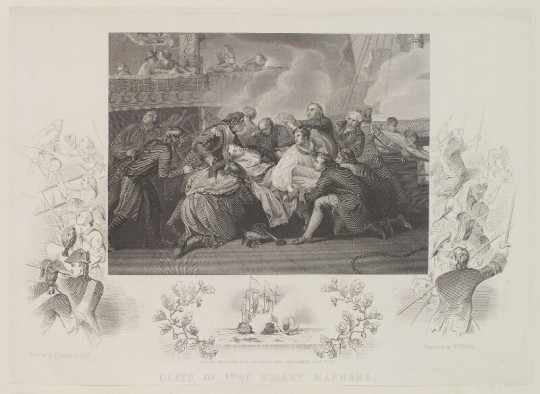
Death of Lord Robert Manners by William Turner Davey, after Thomas Stothard (circa 1800-1825) (c)National Portrait Gallery
Manners was unmarried. He had been elected MP for Cambridge in 1780 in a hard fought, often scurrilous and expensive contest held in his absence, but he never took up his seat.
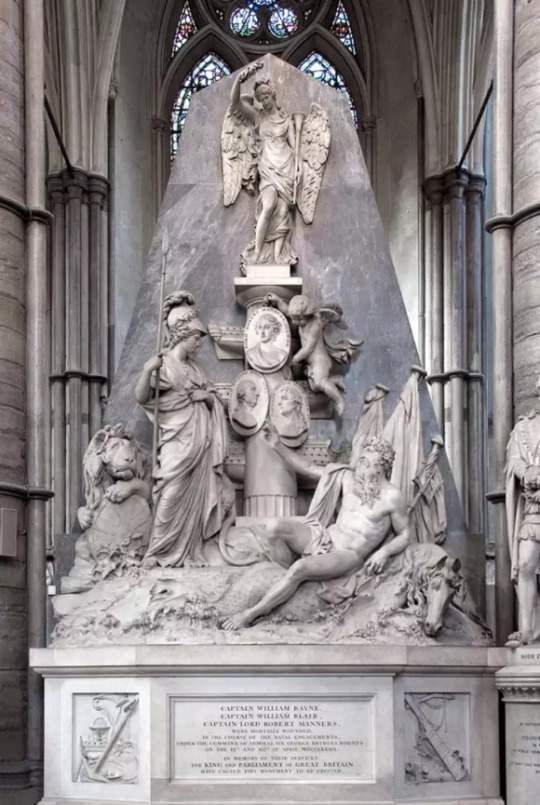
Three Captains memorial to William Bayne, William Blair and Lord Robert Manners © 2019 Dean and Chapter of Westminster
A monument to his memory is in Westminster Abbey with those of his fellow captains William Blair and Alfred Bayne, who also lost their lives at the Battle of the Saintes. Manners was resolute, well respected, bright, skilled and gallant, and famed for his sense of fashion. A fair-minded disciplinarian, he quickly turned the Resolution into an excellent and esteemed ship, and he was deemed more than worthy of the early opportunities granted him by his birthright. Upon being informed of Manners’ death the King informed the Duke of Portland that ‘he would rather have lost three of the best ships in his service’.
31 notes
·
View notes
Photo

Portrait of Huang Ya Dong by Sir Joshua Reynolds, 1776. He was a Chinese page in the household of John Frederick Sackville, 3rd Duke of Dorset (1745-1799) and that he attended Sevenoaks School. The boy had been brought to England from Guangzhou (Canton) by the Duke’s old schoolfriend John Bradby Blake (1745-1773), who worked for the East India Company. Blake was a keen naturalist, and he had brought the boy to England because of his knowledge of the propagation and use of Chinese plants. Huang became a minor celebrity, advising Mrs Delaney and the Duchess of Portland on Chinese plants, Josiah Wedgewood on porcelain manufacture and the physician Andrew Duncan on acupuncture. The painting by Reynolds is possibly the first naturalistic depiction of a Chinese-British subject in art.
Here is a later portrait by Huang Ya Dong by George Dance the Younger:

(source, source)
11 notes
·
View notes
Photo

Heres the different kitties face pics! There are 5 and yes two got 2 photos each because they are hams or squirmybutts! Our 1st kitten I'm having a hard time sticking to a name-- Oopsy or Duke! Hes one of the twins and his sisters name is Daisy so...which is better? Daisy and Duke for Daisy Dukes or Oopsy Daisy? Then we have two photos of our 2nd kitten, Nelly/Nelle (which spelling?) Being a ham, then it goes to our 3rd kitten, silver tabby Leonardo DiCatrio being a handsome floof. Then we have our next name challenged kitty #4, who originally I'd named Duke but now I'm thinking after getting to see her spunky personality her name should be Fern (for Fern Gully)...>>>halp me with the names guys!<<<< then we have our 5th and last but not least 2nd twin Daisy! Daisy was interrupted trying to conquer her own tail so she got 2 photos for being a squirmybutt. Help with the names!! Also, thinking of airing "episodes" of the different kittens called "Furrever Love" to help yall help me get everyone adopted out. Each episode would be a different video short on their personalities and why they'd each make an awesome addition to your house! Like a version of the bachelor... but instead of being stuck married to Chad from the island, you get a real love for life from one of these adorbs finding their Furrever home with you! #kittensofinstagram #kittendatingshow #whatelsedoyouhavetodo (at Portland, Oregon) https://www.instagram.com/p/B_vpFr5hppl/?igshid=1rofmcawd8qfs
1 note
·
View note
Text

Burlington House, Wednesday 3 Dec. 1788
As your Royal Highness is probably anxious to be informed of the result of the Council I presume with all deference to lay before you a short state of what has passed previous to my obtaining copies of the questions agreed to be put to the physicians & their answers, which shall be transmitted to your Royal Highness the moment I receive them, which I expect in the course of this evening, & which I humbly submit to your Royal Highness may be a less exceptionable mode of your Royal Highness’s being possessed of them, than by sending for them to the Council in your own name. The Council in general, influenced by motives of delicacy not perhaps quite consistent with the magnitude & importance of the case under their inquiry, were inclined to concur in abstaining from putting some of those questions to the physicians which might possibly have elucidated the real state of the King’s disorder, & the real & specifick probability of his Majesty’s recovery. The physicians, though on different grounds & in different degrees, concurred in the probability of the King’s recovery. Dr Warren’s opinion was indeed given with some reserve, as he grounded it solely on a calculation that in the specieses [sic] of the disorder under our consideration, the greater number of those afflicted with it did recover. Dr. Addington went farther than any of them, declaring that he thought it probable that the King might recover as complete a sanity & as great a fitness for business, as he possessed before his malady. Dr Addington’s examination closed the business, & it was then determined to lay the whole of the evidence before the two Houses tomorrow & to move to take it into consideration on next Monday, after which Mr. Pitt endeavoured to induce those of the Council who were members of either House to enter into something like an engagement not to proceed into any farther investigation of this matter in their parliamentary capacities, but this, as your Royal Highness will believe, was not assented to.
Burlington House, 8 p.m., Wednesday 3 Dec. 1788
My concern at your Royal Highness’s disappointment is in some measure alleviated by my endeavours to have prevented it. The moment I returned from Council, I attempted to give your Royal Highness some idea of what had passed previous to my being enabled to transmit copies of the examination of the Physicians, whose evidence, I will only say here,very little corresponded with the expectations I had formed of it. But not to add to your Royal Highness’s suspense by detaining your servant here while I repeat what I stared in the letter I presumed to address to your Royal Highness, & dispatched from hence between 5 & 6, I will desire him to ask for that letter at Carleton House before he returns to your Royal Highness with this.
3 notes
·
View notes